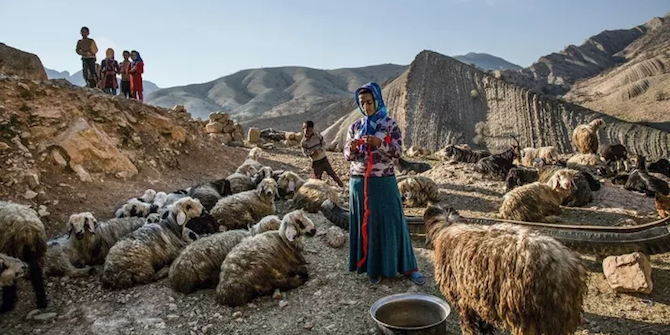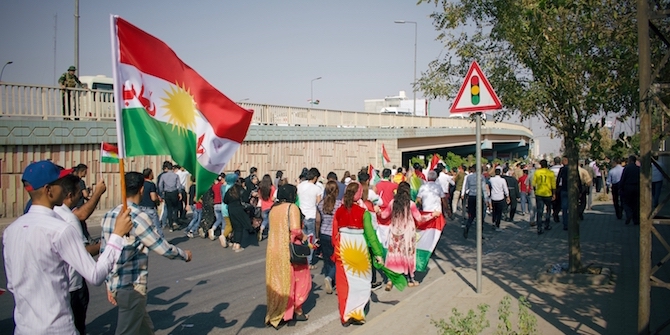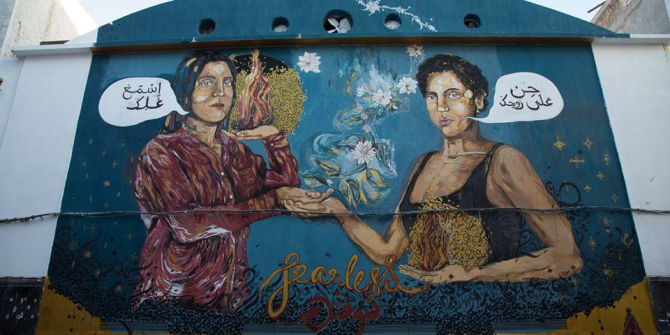By Mehammed Amadeus Mack

In my 2017 book Sexagon: Muslims, France, and the Sexualization of National Culture, I try to answer the above question as it relates to France: why do gender and sexuality come up so often when we discuss immigration? In newscasts and articles on the Arab and African Diaspora in France, but also in Europe writ large, there has been an outsized and often invasive focus on the private lives of Muslim immigrants and their descendants. While in the early and mid 20th century, the integration of immigrants was mostly judged according to criteria like linguistic ability and civic aptitude, today, immigrant integration inevitably passes through a kind of citizenship test that heavily scrutinises attitudes about sexual tolerance. These citizenship tests can be explicit—as in the case of sensitisation videos in Netherlands or now abandoned questionnaires in Germany—or implicit and more subtle; in job or housing interviews, on dates or in personal ads, at nightclubs, and public swimming pools.
The main instrument used to reinforce immigrant and Muslim difference, even when it comes to descendants already French for generations, is sexual demonisation. In Sexagon, I explain how this process, which exclusively presents immigrant heterosexual men as sexual menaces and women and homosexuals as victims and sexual refugees in need of salvation, operates at the level of culture. Though I am not a social scientist, I study representations of minorities, but not the human subjects themselves. I do believe that cultural actors (film-makers, writers, activists) and cultural products (fashion, dance, porn) have a huge role to play in reinforcing the equation of Islam with sexual intolerance. Even more importantly for my purposes, sexual demonisation represses any trace of sexual diversity in Afro/Arab cultures, whether in pre-colonial times or today: thus, Africa and the Middle East have nothing to teach “us” about sexuality, only lessons to learn.
Europe has long harboured a sexualised curiosity about the Middle East and North Africa, evident in both heterosexual and homosexual forms. The voyage to the “Orient” became a cultural expectation and rite of passage for moneyed classes, one that replaced the Grand Voyage to Italy of the past. The “Orient” was a place where European conventions of morality could momentarily be suspended, where boundaries of sexual orientation and race could experimentally be crossed, with the experiment halted and identity reordered upon return to Europe. Colonial contact, and colonists’ judgement of the sexual “perversion” of local customs, also caused Arab intellectuals to rewrite their own history of the Middle East… with all traces of sexual diversity conveniently cut out. Decolonisation and immigration put different pressures on the often solitary men who came from the former French colonies to (re)build mid-century Europe: warm greetings and what were perceived as overly affectionate friendships between men slowly eroded and gave way to more “urban” modes of salutation in the underserved ethnic enclaves where immigrant families concentrated, salutations devoid of any suspicion of homosexuality, let alone homo-affectivity. In this version of events, fathers who were once considered too effeminate eventually had sons who were considered too macho, now public enemy number one to a certain kind of race-blind state feminism.
It is the depictions of these recalcitrant “children” I study in my book, descendants who show a kind of sexual subordination that is both impossible for the state to bear and fascinating to watch, leading to a sexual clash of civilisations on European soil. I contend that the mainstream media has focused on the heterosexual figures of the macho man and the subservient woman to the detriment of two queer figures that present conceptual problems for conventional feminism and gay and lesbian activists. First: the straight-passing “homo-thug” who bypasses the gaybourhood for like-minded connections online in the banlieues, refusing to transparently “come out” and seek asylum in the city centre. And second: “virile” women, lesbian or not, who lead gangs of women and sometimes men, play sports, and write rap songs. With all that the gay rights movement and feminism have accomplished in the 20th century, why would gay men seek more clandestinity rather than less, and why would some women “sacrifice” their femininity by replacing skirts and lipstick with sweatpants and baseball caps? My research interprets these minority representations against the grain and shows the answer to these questions is not so simple. It starts with a difficult concession: some minorities in Europe have not been seduced by society’s promise (or requirement?) of sexual liberation, and have instead privileged urban community belonging over a more national sexual citizenship.
 Mehammed Amadeus Mack is Associate Professor of French Studies at Smith College. Mack’s research focuses on contemporary immigration to France, gender and sexuality, diversity in the banlieues, and the relation between culture and politics. He can be reached at mmack@smith.edu
Mehammed Amadeus Mack is Associate Professor of French Studies at Smith College. Mack’s research focuses on contemporary immigration to France, gender and sexuality, diversity in the banlieues, and the relation between culture and politics. He can be reached at mmack@smith.edu
In this series:
- Sexualities and LGBT Activism in the Middle East and North Africa by Polly Withers
- Rethinking Transnational Solidarities by Nour Abu-Assab and Nof Nasser-Eddin
- A Reproductive Justice Framework for Queer Liberation: Perspective from Lebanon by Roula Seghaier
- Sexualities and LGBTQI+ Activism in Tunisia: the Example of the Feminist LGBT Movement Chouf by Silvia Quattrini and Bochra Triki






